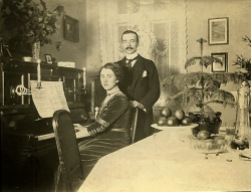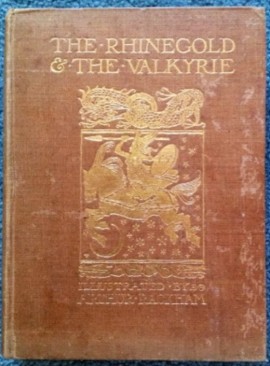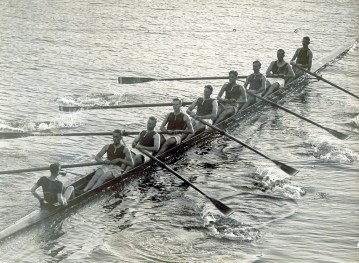This week’s Sepia Saturday prompt is a 1939 photograph of four men sitting in deck chairs on a ship bound for the Congo.
I have something similar.
Among my paternal grandmother’s photographs is a casual shot of her father, Arthur Murray Cudmore, her future father in law, CTC de Crespigny, and Bronte Smeaton, another Adelaide doctor, in deckchairs on RMS Mooltan sailing to Lemnos in the Aegean, near Gallipoli, in 1915. Both Drs de Crespigny and Cudmore held the rank of Lieutenant-Colonel: de Crespigny was Registrar and Secretary and Cudmore a consultant surgeon of the 3rd Australian Hospital.

Arthur Murray Cudmore with Trent de Crespigny [centre] & Bronte Smeaton [left] in 1915 at sea. Picture from my grandmother Kathleen née Cudmore’s scrapbook. (Kathleen later married the son of Constantine Trent Champion de Crespigny.)
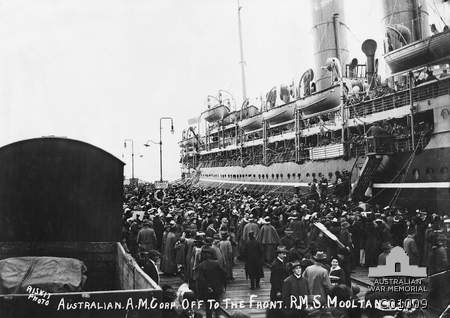
18 May 1915 Crowds of well-wishers farewell Australian Army Medical Corps (AAMC) personnel who have just embarked on the transport HMT Mooltan at Port Melbourne railway pier. Australian War Memorial image id C01009 retrieved from http://www.awm.gov.au/collection/C01009/
My great grandfathers served at Lemnos with the Third Australian General Hospital receiving sick and wounded soldiers from Gallipoli.
In January 1916 the hospital closed. De Crespigny was put in charge of the 1st Australian General Hospital at Heliopolis. The staff of the hospital sailed for Marseilles in 1916 from Alexandria.
On 24 March 1916 Alice Ross King received her orders to sail to France. She and her fellow nurses from No. 1 Australian General Hospital waited on the pier at Alexandria, weighed down with the booty from a final shopping spree. One nurse had a canary in a cage. A captain was told to make sure all the nurses were on board the hospital ship Braemar Castle.‘Not knowing the AANS he told us to form a double row to “number off”,’ Alice recounted.‘He wanted 120. Each time he got a different number. He was terribly worried. Finally our big [commanding officer] Col De Crespigny came down the gangway to see what was the matter. In his tired voice he called out, “Sisters! Form a fairly straight line. Left turn! Get on board.” “Oh! Sir,” said Matron, “they are not all here.” “Then they’ll be left behind,” said our CO. Our first hard lesson! We had always been fussed over [and] spoilt before,’ Alice wrote, with a shade of overstatement. (Rees, Peter. The Other Anzacs: Nurses at War 1914-1918. Crows Nest, N.S.W.: Allen & Unwin, 2008. Retrieved from https://epdf.pub/other-anzacs-the-nurses-at-war-1914-1918.html)
I never knew my great grandfather Constantine Trent Champion de Crespigny, and my impression of him is derived from what my father can remember and other people’s memoirs. But this story, of him of directing people to get on with it, sounds characteristic. It certainly brings him to life for me.
Another shipboard anecdote is set in the journey home. My great grandfather, supposedly averse to brisk exercise, did his rounds of the deck very very slowly. But he met a satirical suggestion about his speed with a rapid retort:

The TALK OF THE TOWN (1941, January 11). The Mail (Adelaide, SA : 1912 – 1954), p. 7. Retrieved from http://nla.gov.au/nla.news-article55761367
Both my great grandfathers arrived back from the war on Tuesday 13 May 1919 on the HMAT Dunluce Castle.


Personal Notes. (1919, May 17). Observer (Adelaide, SA : 1905 – 1931), p. 12. Retrieved from http://nla.gov.au/nla.news-article164132088

Soldiers line the deck of the hospital ship HMAT Dunluce Castle in the harbour in Malta about 1915. Image from the Australian War Memorial P05382.015









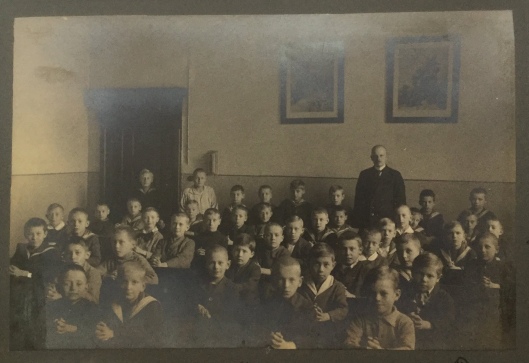






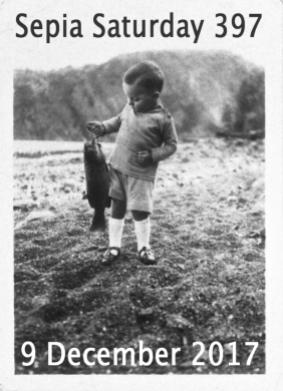

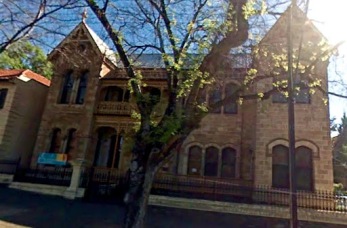



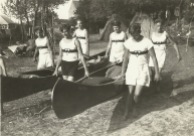


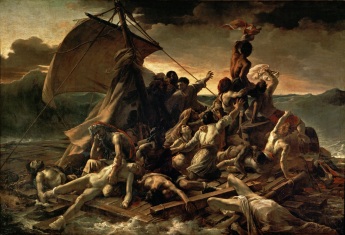





![f3e2f-coopers_arms_woolwich_se18_2863862846 The Coopers Arms, also known as Plaisteds Wine Bar, in 2008 (photograph from Wikimedia Commons taken by Ewan Munro and uploaded by Oxyman) [CC-BY-SA-2.0 ]](https://anneyoungau.files.wordpress.com/2014/07/f3e2f-coopers_arms_woolwich_se18_2863862846.jpg?w=158&resize=158%2C211&h=211#038;h=211)

